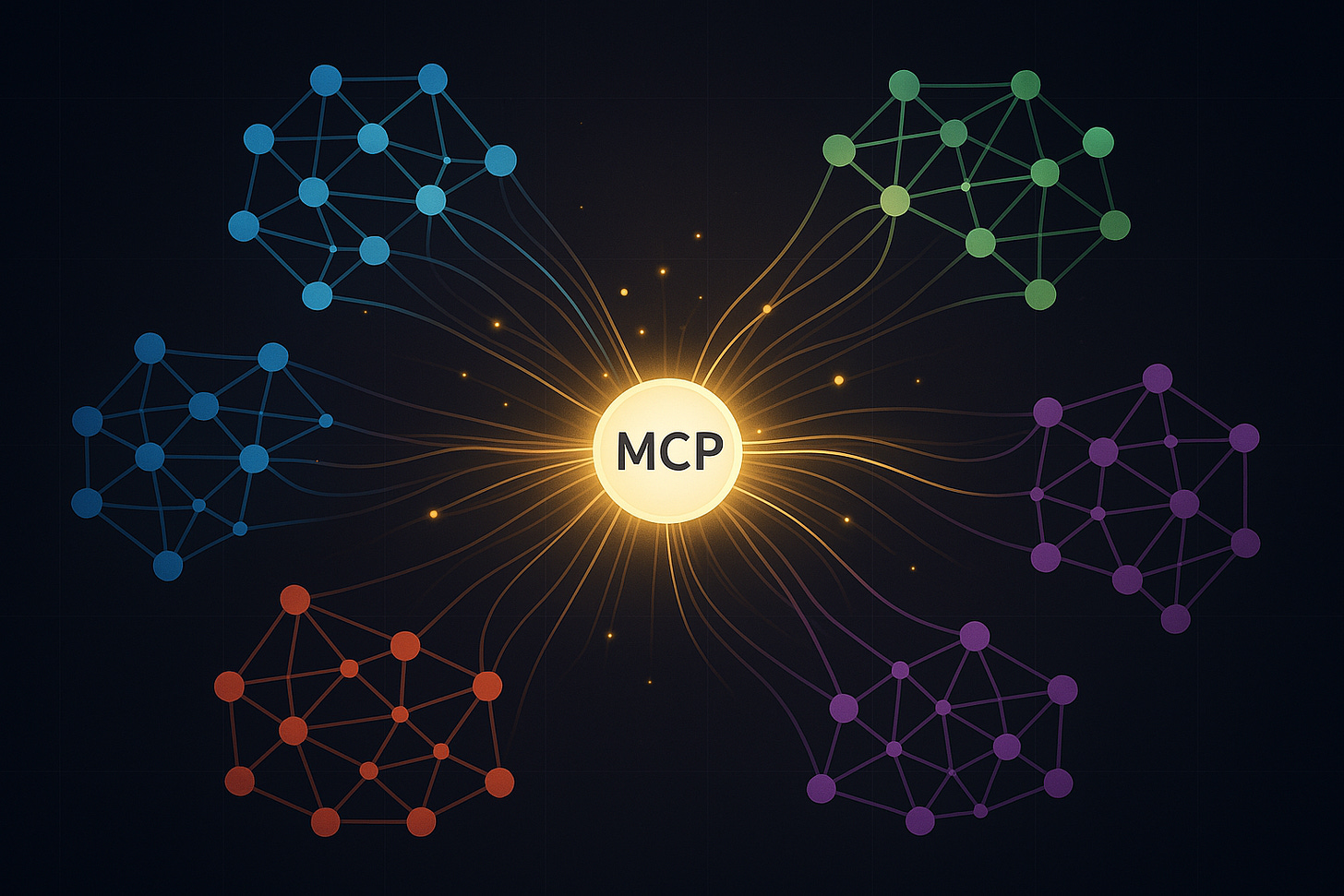Model Context Protocol (MCP): The Future of AI Interoperability
A simple article that explores the what, why and how of MCP
In today's rapidly evolving AI landscape, the Model Context Protocol (MCP) is emerging as a crucial framework for enhancing AI system interoperability and capabilities. This article explores what MCP is, why it matters, how it works, and the exciting possibilities it offers for the future of artificial intelligence.
What is the Model Context Protocol?
The Model Context Protocol is a standardized communication framework that enables AI systems to seamlessly share and integrate contextual information across different platforms, applications, and environments. At its core, MCP defines how context—the background information, history, user preferences, and situational awareness—can be structured, transmitted, and utilized by various AI systems working together.
Unlike traditional API-based interactions, where data is exchanged in fixed formats, MCP creates a dynamic, context-aware layer that allows AI systems to maintain continuity and coherence when transferring tasks or collaborating on complex problems.
Why MCP Matters
The Context Gap Problem
Before MCP, AI systems often suffered from what experts call the "context gap" when attempting to work together. Each system maintained its own understanding of user needs and background information, leading to fragmented experiences when users moved between systems. The result? Repetitive conversations, lost information, and AI systems that couldn't effectively build on each other's work.
Benefits of MCP
MCP addresses these challenges by providing:
Seamless Transitions: Users can move between different AI assistants without having to re-explain their needs or preferences.
Enhanced Collaboration: Multiple AI systems can work together on complex tasks with a unified understanding.
Improved Personalization: Context about user preferences and history can be appropriately shared across systems.
Reduced Redundancy: Users don't need to repeat information when switching between AI tools.
Greater Privacy Control: MCP includes standardized methods for users to control what context is shared and with whom.
How MCP Works
The Model Context Protocol functions through several key components:
1. Context Containers
MCP defines standardized "context containers" that encapsulate different types of information:
User Context: Preferences, history, and personal information
Task Context: Current goals, progress, and requirements
Domain Context: Specialized knowledge relevant to specific tasks
Environmental Context: Time, location, device information, and other situational factors
2. Context Exchange Protocol
At the technical level, MCP implements:
Serialization Standards: Common formats for encoding contextual information
Authentication Mechanisms: Methods to verify the source and integrity of context
Permission Frameworks: Systems for controlling access to sensitive contextual data
Context Routing: Rules for directing context to appropriate recipients
3. Implementation Approaches
Organizations can implement MCP through:
Native Integration: Building MCP directly into AI platforms
Middleware Solutions: Using adapters that translate between proprietary systems and MCP standards
Cloud Context Services: Leveraging centralized context management services
The Possibilities of MCP
The adoption of MCP opens up numerous exciting possibilities:
AI Ecosystems
MCP enables the creation of diverse AI ecosystems where specialized tools can work together seamlessly. Imagine a research assistant AI that can hand off its findings to a data visualization AI without losing any nuance or requiring user intervention.
Cross-Platform Continuity
Users can start conversations on their smartphones, continue them on laptops, and finish on smart speakers—with each device's AI maintaining full awareness of the conversation history and context.
Specialized AI Collaboration
MCP allows for the development of highly specialized AI systems that excel in narrow domains but can collaborate when broader challenges arise. For example, a medical diagnosis AI might work alongside a treatment planning AI and a patient communication AI to provide comprehensive healthcare support.
Enterprise Knowledge Integration
For businesses, MCP offers the ability to integrate AI systems with organizational knowledge bases, ensuring that AI assistants provide responses that align with company policies, use internal terminology correctly, and leverage institutional expertise.
Multi-Modal Experiences
By sharing context across different interface modalities, MCP enables truly integrated multi-modal experiences. Voice assistants can hand off to visual interfaces when needed, with each interface aware of what has transpired in other modalities.
Looking Ahead: The Future of MCP
As MCP continues to develop, we can expect:
Standardization Efforts: Industry-wide adoption of MCP standards through organizations like IEEE or ISO
Enhanced Security Measures: More sophisticated approaches to protecting sensitive contextual information
Context Intelligence: AI systems that can intelligently determine what context is relevant to share in different situations
Global Context Networks: Distributed systems for managing context across vast networks of AI applications
The Model Context Protocol represents a significant step forward in AI development, moving us from isolated, siloed systems toward a more integrated, contextually aware AI ecosystem. As adoption grows, users will increasingly experience AI as a coherent, helpful presence across their digital lives rather than as disconnected, repetitive tools.
For developers and organizations looking to implement MCP, the journey begins with understanding the core principles of context management and embracing the standardized approaches that make seamless AI interoperability possible.


